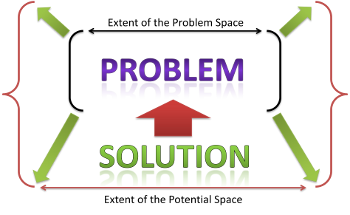Table of Contents
On Emergence
Introduction
As a general rule Emergence is about changing the observer and the observed.
David once described Emergence as:
The emergence of knowledge via spatial and other transformations, are thought experiments that take an issue or context and subject it to a series of observational perspectives. The purpose of which is to construct a metaphorical identity of the knowledge and its relational knowledge set, structural support and provenance.
Practical Applications of Emergence
There are a series of questions based on the 'ABC' model that bring a series of new spatial perspectives about the knowledge. For instance a spatial transformation of ‘B’ rotates the idea through 3D space. The idea of turning information on its side is a meta-view that reveals the systems architecture that holds the knowledge in space.
Emergence provides the context and process for the problem to ‘give up’ its structure, to allow us to experience and work with the problems system / network of knowledge nodes. Further processing allows the system/network to self-organise, i.e. develop a network solution.
“If we and past aeons of scholars have not yet begun to understand the power of self organization as a source of order, neither did Darwin. The order that emerges in enormous, randomly assembled, interlinked networks of binary variables is almost certainly merely the harbinger of similar emergent order in whole varieties of complex systems.
We may be finding new foundations for the order that graces the living world. If so, what a change in our view of life, and our place, must await us. Selection is not the whole source of order after all. Order vast, order ordained, order for free. We may be at home in the universe in ways we have hardly begun to comprehend.” - Stuart Kauffman - At Home in the Universe
Network Solutions
Network solutions are ‘Bottom Up’ solutions; they come within the system, not from outside the system, as in ‘Top Down’ solutions, which are provided by a ‘Superior Intelligence’. Consider this to be parallel to the following:
Imagine we exist in a world where we do not yet know about ‘kettles’. Notice the difference in experience between touching the kettle and learning it is hot, and someone telling us the kettle is hot.
To allow a ‘Bottom Up’ solution to emerge, the ‘Problem Space’ or ‘Problem Domain’ has to expand out into the ‘Potential Space’ where a solution to the issue exists.
Figure 15
This and the following chapters will introduce a new approach to expanding the boundaries of the client and therefore the opening up their ‘tunnel vision’. This approach has at its core, the theoretical/philosophical construct of the ‘Power of Six’. I will provide more detail on reiteration and its purpose, the various styles of applying the ‘Power of Six’ to develop increasing amounts of nodes and knowledge within the client’s world/network to allow their system to self-organise.
